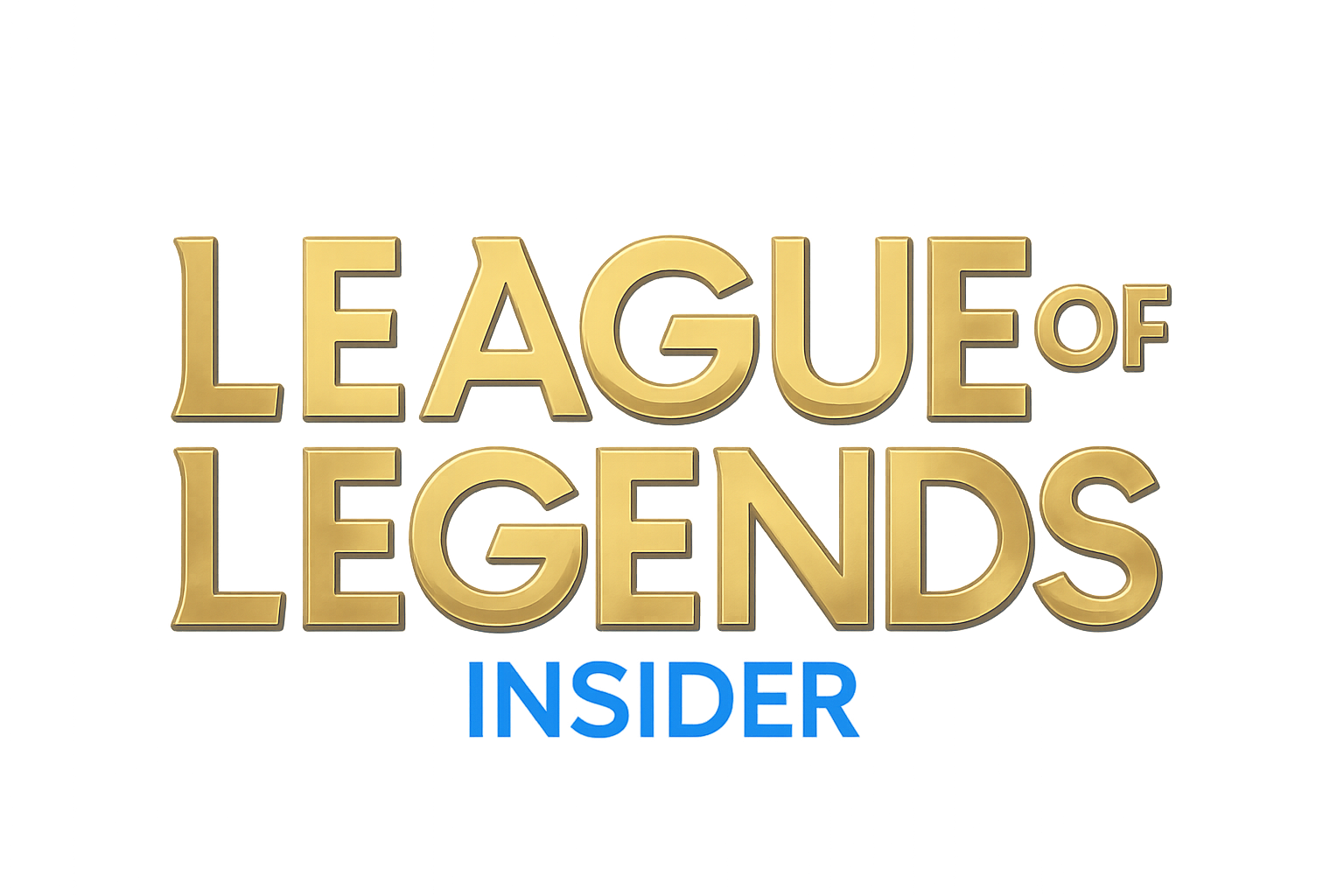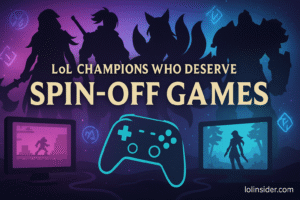In the ever-evolving world of League of Legends, balance is everything. Every patch introduces changes—new champions, reworks, buffs, and nerfs—that keep the game fresh and competitive. But sometimes, even with weeks of planning, testing, and feedback, a champion, item, or rune becomes too powerful or too disruptive after release. That’s when Patch Hotfixes and Emergency Nerfs come into play.
These quick updates are Riot’s way of reacting to unforeseen balance issues, game-breaking bugs, or extremely unhealthy mechanics that warp the meta overnight. But what exactly are hotfixes? How do emergency nerfs differ from regular patches? And why do they matter so much for players, pros, and the game as a whole?
This guide will break everything down for you. By the end, you’ll fully understand why these balance adjustments happen, how Riot implements them, and how you can adapt to sudden changes in the game.
What Are Patch Hotfixes in League of Legends?
A patch hotfix in League of Legends is a quick, out-of-schedule update that fixes bugs, exploits, or urgent balance issues that can’t wait for the next major patch. Unlike standard patches that are released every two weeks, hotfixes are usually smaller, targeted updates that address immediate problems.
Some common reasons for hotfixes include:
- Bug Fixes – Fixing abilities, interactions, or unintended behavior (e.g., a spell doing double damage).
- Overpowered Champions – Nerfing champions that dominate games too heavily after a recent buff or release.
- Item Adjustments – Tuning items that break the meta or create unhealthy gameplay patterns.
- System Stability – Addressing server crashes, game-breaking exploits, or major client issues.
Essentially, hotfixes are Riot’s “emergency toolkit” to keep the game balanced and enjoyable between major patch cycles.
What Are Emergency Nerfs?
Emergency nerfs are a specific type of hotfix aimed at toning down a champion, item, or rune that is far stronger than intended. They’re usually deployed within a few days of a patch, especially when something has a win rate or pick rate so high that it destabilizes competitive play.
Examples of when emergency nerfs are necessary:
- A new champion is released and has a 70% ban rate in solo queue and pro play.
- A new item provides an unintended overpowered synergy that dominates the meta.
- A small buff ends up breaking a champion’s balance and makes them unplayably strong.
Unlike standard nerfs that are part of the two-week patch cycle, emergency nerfs are released immediately to restore balance.
How Riot Decides When to Deploy Hotfixes
Riot uses a combination of data-driven insights and community feedback to determine if something needs an emergency fix. Here are the main factors:
- Win Rate Thresholds
- If a champion’s win rate suddenly jumps above 55–57% across most skill levels, that’s a red flag.
- For professional play, even a 50–52% win rate with extremely high pick/ban rates can trigger a nerf.
- Ban and Pick Rate
- If a champion’s ban rate exceeds 70–80%, it indicates that players view them as too powerful or unfun to play against.
- Game Health Issues
- If a mechanic makes the game less fun or creates frustrating experiences (e.g., Zoe one-shotting people from screens away), Riot may step in quickly.
- Pro Play Balance
- Riot carefully monitors pro play, especially during tournaments like Worlds, MSI, and regional leagues (LCK, LEC, LCS, LPL). If a champion or item dominates, emergency nerfs can keep the competition fair.
- Bug Exploits
- When a game-breaking bug is discovered (such as an infinite gold bug or a crash exploit), a hotfix is rolled out immediately. Sometimes, champions are disabled in pro play until fixed.
The Difference Between Regular Patches, Hotfixes, and Micropatches
To understand Patch Hotfixes and Emergency Nerfs, it’s important to know the difference between Riot’s balance update methods:
| Update Type | Frequency | Purpose | Example |
|---|---|---|---|
| Major Patch | Every 2 weeks | Planned balance changes, new champions, skins, features | Patch 15.9 with buffs & nerfs |
| Micropatch | Small updates between patches | Minor number tweaks to quickly balance the game | Adjusting an item’s cost mid-patch |
| Hotfix / Emergency Nerf | Immediate (within hours/days) | Fix broken champions, items, or exploits | Akshan revive passive nerf (11.15 hotfix) |
Hotfixes are essentially mini-patches that address urgent issues. Unlike planned patches, they don’t go through the full Public Beta Environment (PBE) testing cycle, but Riot ensures they don’t introduce more bugs.
Famous Examples of Patch Hotfixes & Emergency Nerfs
1. Aphelios Release (Patch 9.24)
- Aphelios launched with five weapons and insane damage output, quickly dominating every game.
- Riot had to issue multiple hotfix nerfs to his damage ratios and cooldowns.
- He still remained one of the strongest ADCs in pro play for months.
2. Zoe’s Release (Patch 7.24)
- Zoe could one-shot squishy champions with a single ability combo.
- Riot hotfixed her damage within days after community outrage.
3. Akali Rework (Patch 8.15)
- Akali’s shroud made her untargetable under turrets, allowing her to tower dive without punishment.
- Riot hotfixed the turret interaction because it broke game fundamentals.
4. Aphelios & Sett in Pro Play
- During competitive seasons, both champions saw near 100% pick/ban rates.
- Riot issued quick nerfs before major tournaments to prevent one champion from warping the entire meta.
5. Zeri’s Release (Patch 12.2)
- Zeri’s mobility and scaling made her unstoppable in both solo queue and pro play.
- Riot hotfixed her multiple times, reducing her damage and healing.
6. Turbo Chemtank (Season 11)
- The item provided massive speed boosts, turning tanks into unstoppable engage machines.
- Riot issued an emergency nerf after pros started abusing it on champions like Udyr and Hecarim.
7. Yuumi’s Release (Patch 9.10)
- Yuumi’s unique “attach” mechanic caused countless bugs and balance issues.
- Riot hotfixed her numbers several times in the first weeks to prevent her from being overbearing.
How Hotfixes Affect the Meta
Hotfixes and emergency nerfs can completely shift the state of the game in a matter of days. For example:
- Pro Play Drafts: A champion that’s suddenly nerfed may fall out of first-pick priority, forcing teams to change strategies.
- Solo Queue: Players who one-tricked an OP champion may struggle after a hotfix and need to adapt.
- Itemization: Emergency nerfs to items (like Stridebreaker or Duskblade in the past) force players to try different builds.
- Champion Diversity: Quick nerfs usually open up the meta by removing oppressive picks.
However, hotfixes can also lead to over-nerfing, where a champion becomes unplayable, requiring future buffs to bring them back.
How Riot Balances Urgent Patches
Riot’s balance team follows a data + feedback approach when issuing hotfixes.
- Data Collection
- They monitor win rates, pick rates, and ban rates across millions of games.
- Special attention is given to Platinum+, Master+, and Pro play levels.
- Community Feedback
- Reddit, Twitter/X, and pro player feedback can speed up Riot’s response.
- If everyone complains about a champion, Riot takes a closer look.
- Testing & Verification
- Even though hotfixes are urgent, Riot tests them internally to prevent new bugs.
- Some fixes require server-side changes, while others wait until the next patch.
- Disabling Champions/Items
- If a bug or exploit is too dangerous, Riot will temporarily disable the champion or item in live servers and pro play.
The Player Perspective: Love and Hate
For players, Patch Hotfixes and Emergency Nerfs can feel like a double-edged sword.
Pros:
- Prevents weeks of unbalanced gameplay.
- Keeps the competitive scene fair.
- Quickly addresses game-breaking bugs.
Cons:
- One-trick players may feel punished after investing time in a newly buffed champion.
- Frequent changes can create “patch fatigue.”
- Sometimes, nerfs overshoot and make champions too weak.
For example, when Riot nerfed Irelia after her rework, many players felt she was left underwhelming for months. Similarly, when Zeri was hotfixed multiple times, her play rate drastically dropped.
Emergency Buffs: The Opposite of Nerfs
While hotfixes are often associated with nerfs, sometimes Riot issues emergency buffs.
This usually happens when:
- A new champion or item is far too weak.
- A bug makes a champion underperform.
- A competitive event is approaching and a champion needs to be at least viable.
For example:
- Aphelios hotfix buffs (after being released slightly weaker on PBE before quickly becoming too strong).
- Azir adjustments when his win rate dropped below 40%.
- Zeri’s initial hotfix buffs before later nerfs.
Patch Hotfixes in Professional Play
Professional play is one of the biggest reasons hotfixes exist. Imagine a scenario where:
- Worlds is about to start.
- A new champion (like Akshan or Nilah) is suddenly dominating high-level scrims.
- Without a quick nerf, every single game on stage would feature the champion being picked or banned.
To avoid stale metas, Riot often issues emergency patches right before tournaments. However, they also have a two-week patch lock rule before Worlds and MSI, meaning only bug fixes (not balance changes) can be applied once the event begins.
This creates tricky situations—like with Akshan in Worlds 2021, where he was banned for the entire event due to balance concerns.
How to Adapt to Patch Hotfixes
As a player, sudden balance changes can feel disruptive, especially if they target your favorite champion. But adapting quickly is part of climbing in ranked and staying competitive. Here’s how to handle hotfixes like a pro:
- Stay Updated
- Follow Riot’s official patch notes and social media channels.
- Check websites like lolinsider.com, OP.GG, and U.GG for updated stats.
- Expand Your Champion Pool
- Don’t rely on just one OP champ—if they get hotfixed, you’ll struggle.
- Keep at least 2–3 champions per role you play.
- Follow Pro Players
- Watch how pro players adapt to nerfs. Often, they find new item builds or alternative champions.
- Embrace Meta Shifts
- Use hotfixes as opportunities to experiment with new strategies.
- A nerfed champion might still be strong in solo queue, even if weaker in pro play.
- Don’t Tilt
- Remember, everyone is affected by hotfixes, not just you.
- Instead of complaining, think of it as a fresh challenge.
Future of Hotfixes in League of Legends
As League continues to evolve, hotfixes will remain a critical part of maintaining balance. Some possible future trends include:
- Faster Deployment: With improvements in Riot’s patching system, hotfixes may roll out within hours of a broken change.
- More Transparency: Riot has been increasingly open about their balance philosophy, and we can expect even more communication about why emergency nerfs happen.
- AI-Powered Balance Monitoring: Riot could use advanced data analytics and machine learning to detect overpowered champions faster.
- Proactive Adjustments: Instead of waiting for community backlash, Riot might hotfix preemptively based on test server data.
Final Thoughts
Patch Hotfixes and Emergency Nerfs are an essential part of League of Legends’ long-term health. While they may feel frustrating in the moment, they ensure that the game remains balanced, competitive, and fun for both solo queue players and professional esports.
As a player, the best approach is to stay informed, flexible, and open to change. Hotfixes aren’t going away—in fact, they’re becoming more important as the game continues to evolve at a rapid pace.
So next time you see a champion suddenly nerfed or an item adjusted mid-patch, you’ll know why it happened—and you’ll be ready to adapt faster than your opponents.







